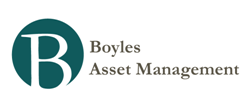Annaly Salvos: The Camel’s Back
Ireland’s rating downgrade by Standard & Poor's on August 24 and the related news of its struggling millstone, Anglo Irish Bank, bring our attention back to the ongoing challenges facing sovereign entities in the postdiluvian financial world of 2010. We are not alone in this endeavor, as the International Monetary Fund just published research on a similar theme. What can we learn from the current array of sovereign fiscal woes to better anticipate potential outcomes in the United States?
Let us state up front that while there are similarities between the U.S. and other problem countries, the differences are also profound. What happened in Ireland, Greece, Latvia, Iceland, Japan or any country experiencing the wrenching tribulations of fiscal imbalances, higher borrowing costs and/or reduced liquidity might not happen here. These countries do not print the world’s reserve currency. Nor are their currencies, unlike the US Dollar (or even the yen), viewed as a “safe haven” for investors. Moreover, the United States has a robust and diversified economy and the scale of deep capital markets that mitigate the risk of capital flight by foreign investors. In other words, the whole world is long and leveraged to the US, and that is a form of protection.
Nonetheless, the similarities are worthy of consideration. After all, the European Union is long and leveraged to Greece (and Spain and Portugal), and the UK is long and leveraged to Iceland. So these circumstances only prove that the potential collapse by a country will spur action by those most at risk, but the crisis can still occur. So what are some of the similar characteristics of countries that have faced financial crisis?
- Richard Duncan Quotes
“Before 1971, currencies were pegged either directly or indirectly to gold. Therefore, there was nothing to be gained by creating fiat money in order to buy any other country’s currency. When the fixed exchange rate system ended with the collapse...
- Satyajit Das: Why Germany Can't Bail Out Europe
Germany is indirectly exposed through its support of various official institutions like the European Union (EU), the European Central Bank (ECB), the International Monetary Fund (IMF) and special bail-out funds. As of April 2012, the exposure of ECB alone...
- Should Value Investors Care About The Debt Crisis? - By Zeke Ashton
The 2011 debt crisis is largely about whether or not the largest and most credit-worthy nations have the balance sheets, the willingness, or the credibility to bail out the smaller and less credit worthy nations. Given that the governments of even the...
- Hussman Weekly Market Comment: Two Choices: Restructure Debts Or Debase Currencies
In the end, as I've argued repeatedly over the years, monetary policy is only as good as fiscal policy. A central bank does not have wealth of its own. It is a zero-sum entity that can only enrich those from whom it purchases debt by debasing the...
- Sprott September Comment: Safe Harbour No More
The US dollar (USD) is the world’s “reserve currency”. This status is arguably the greatest privilege enjoyed by the US as an economic entity. Most people don’t appreciate its significance. As the world’s reserve currency, the USD is used by...

